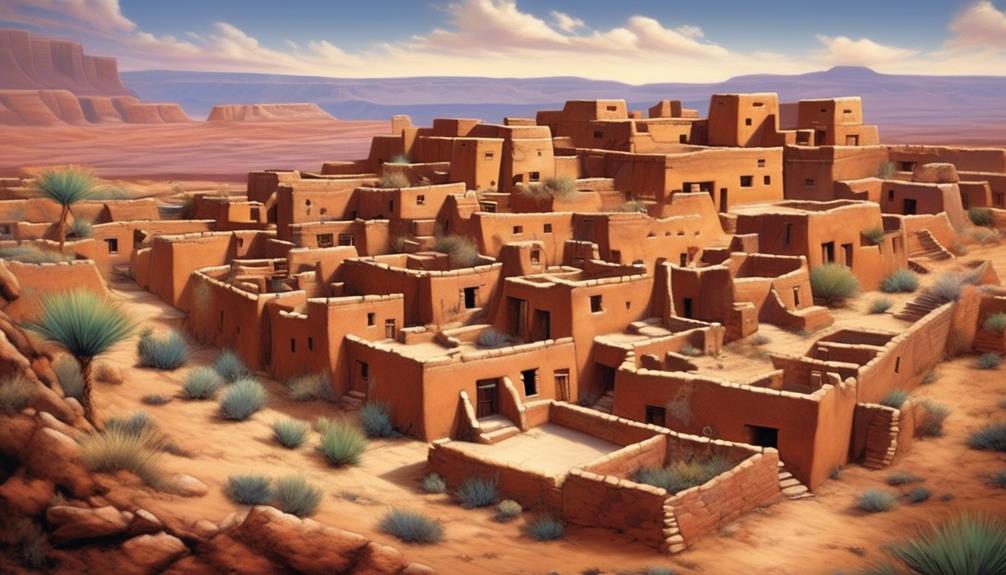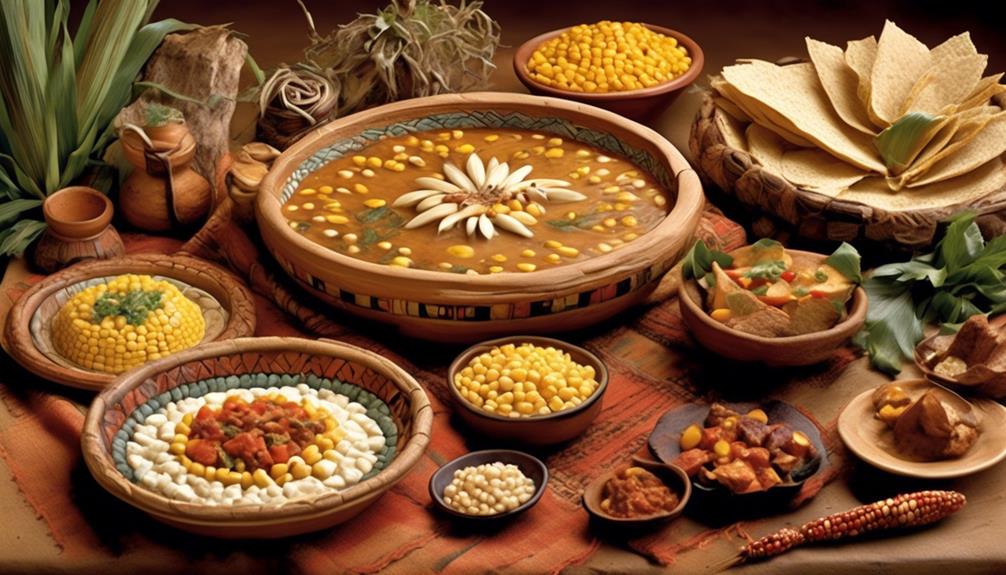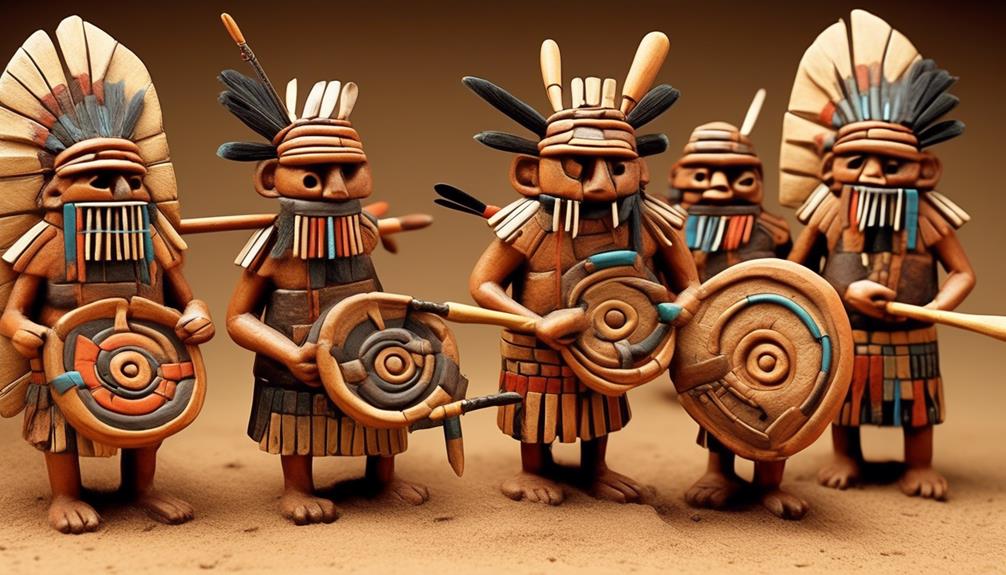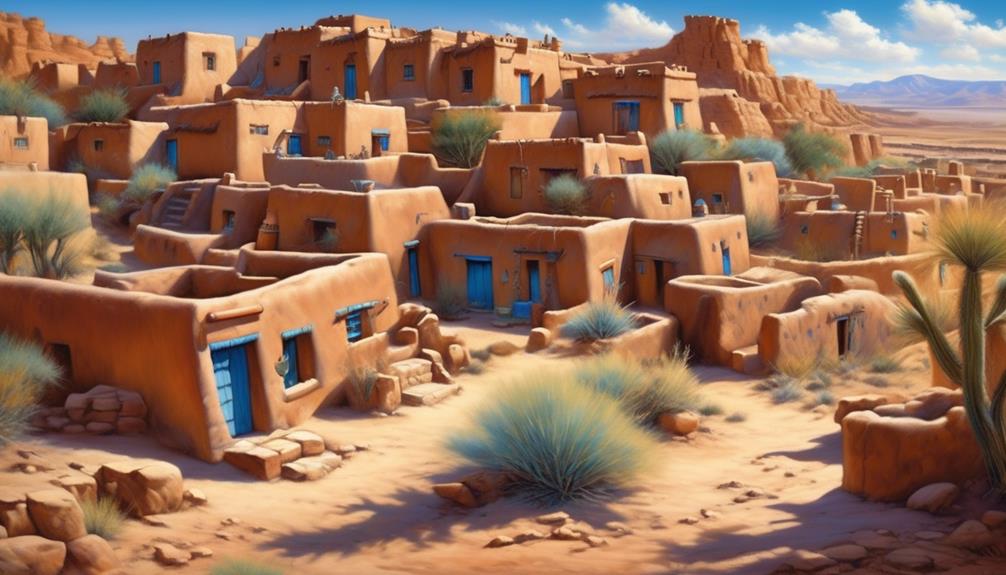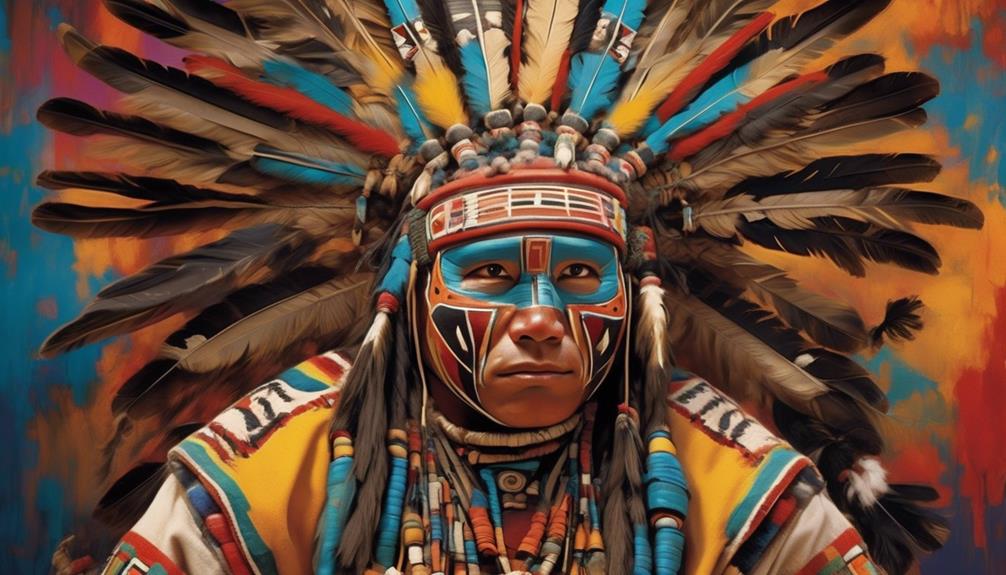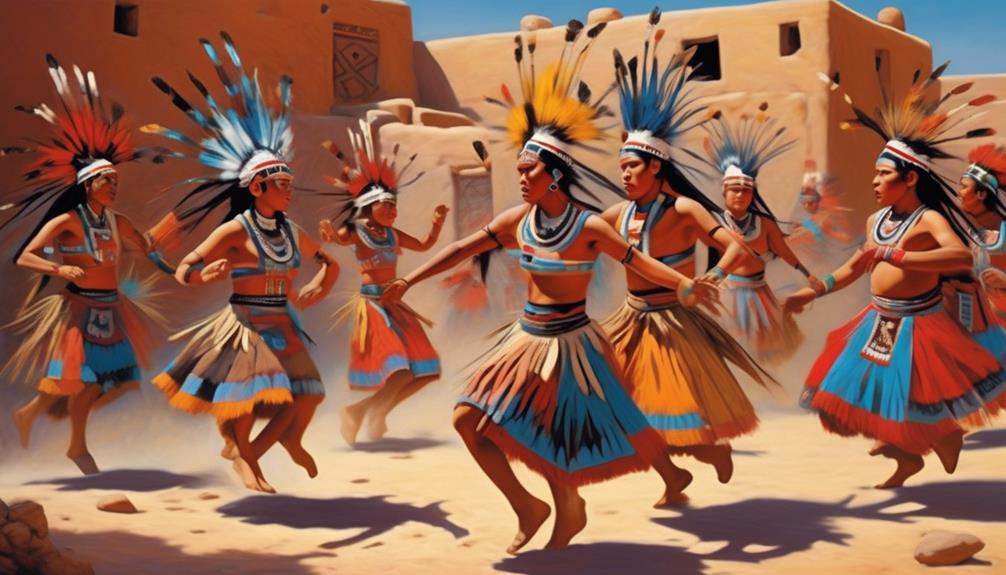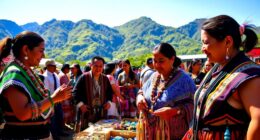Have you ever thought about the ancient origins of the Hopi Tribe? This question has intrigued historians and anthropologists for generations.
The mystery of how long the Hopi Tribe has been around is a fascinating topic that sheds light on the rich cultural tapestry of the American Southwest. As we explore the history and traditions of the Hopi people, we uncover a story that spans centuries and holds valuable insights into the resilience and continuity of Indigenous communities.
But what we uncover may challenge some common assumptions and spark a deeper understanding of the enduring legacy of the Hopi Tribe.
Key Takeaways
- The Hopi Tribe traces its origins back to the ancient Pueblo people and has a continuous habitation of Hopi villages for over a thousand years.
- The Hopi Tribe has one of the oldest living cultures in documented history and has preserved its cultural heritage through spiritual beliefs, agricultural practices, and artistic expressions.
- European contact led to cultural assimilation and the loss of autonomy for the Hopi Tribe, resulting in historical trauma and lasting effects on cultural identity and societal dynamics.
- Despite these challenges, the Hopi Tribe has demonstrated resilience and cultural continuity through their ability to adapt, preserve their cultural heritage, and maintain cohesive social structures.
Early Origins of the Hopi Tribe
The early origins of the Hopi Tribe can be traced back to the ancient Pueblo people who inhabited the Southwestern region of what's now the United States. Archaeological evidence suggests that the Hopi have an ancestral connection to the Ancestral Puebloans, also known as the Anasazi, who lived in the Four Corners area of Arizona, New Mexico, Utah, and Colorado from around 500 to 1300 AD. The Hopi people are believed to be the descendants of this ancient culture, and their villages in northeastern Arizona have been continuously inhabited for over a thousand years.
The ancestral connection between the Hopi Tribe and the ancient Pueblo people is supported by archaeological findings such as pottery, tools, and petroglyphs that have been discovered in the region. These artifacts provide insights into the daily lives, religious practices, and societal structure of the ancestral Puebloans, shedding light on the cultural heritage that the Hopi Tribe has inherited.
Studying the archaeological evidence allows us to understand the long-standing presence of the Hopi Tribe in the Southwestern United States and appreciate their enduring cultural traditions.
Ancient Traditions and Culture
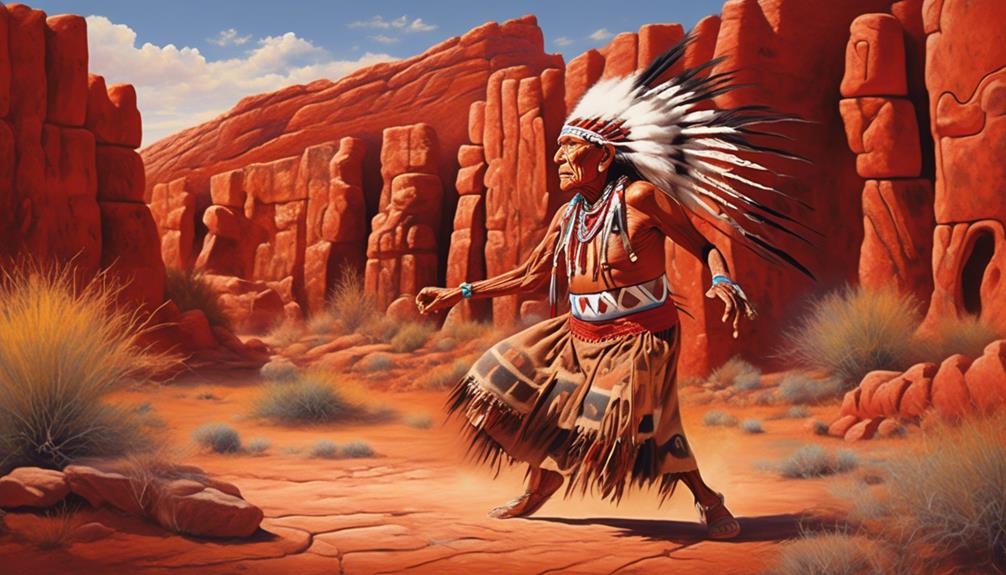
Having established the ancestral connection between the Hopi Tribe and the ancient Pueblo people, we can now explore the ancient traditions and culture of this enduring community. The Hopi Tribe has a rich tapestry of ancient practices that have been meticulously preserved over centuries, making it one of the oldest living cultures in documented history. The tribe's cultural preservation is deeply rooted in their spiritual beliefs, agricultural practices, and artistic expressions.
| Ancient Practices | Cultural Preservation |
|---|---|
| Katsina ceremonies | Passing down oral traditions |
| Dry farming techniques | Protecting sacred lands |
| Pottery making | Maintaining traditional crafts |
| Clan-based social structure | Upholding communal values |
The Hopi Tribe's ancient practices encompass a wide array of ceremonies, including the revered Katsina ceremonies, which honor the spiritual beings believed to bring rain and other blessings. Additionally, their advanced dry farming techniques have sustained their agricultural traditions for generations. The tribe's pottery making also reflects their cultural heritage, with each piece telling a story of their ancestry. The clan-based social structure remains integral to their identity, emphasizing communal values and solidarity. Through these enduring traditions, the Hopi Tribe continues to embody the essence of cultural preservation.
Impact of European Contact
Upon contact with European settlers, the Hopi Tribe experienced profound disruptions to their traditional way of life, leading to significant cultural and social changes. The impact of European contact on the Hopi Tribe included:
- Cultural Assimilation: The arrival of European settlers brought about efforts to assimilate the Hopi people into Euro-American culture. This resulted in pressure to adopt Western practices, language, and religion, leading to a loss of traditional Hopi customs and knowledge.
- Social Displacement: Historical trauma emerged as a consequence of European contact, causing social displacement and disintegration of traditional community structures. The imposition of foreign governance systems and land encroachment disrupted the Hopi's communal lifestyle and agricultural practices, leading to internal strife and social unrest.
- Loss of Autonomy: European contact led to a loss of autonomy for the Hopi Tribe as they were subjected to external political and economic influences. This undermined their traditional governance systems and economic self-sufficiency, further exacerbating the cultural assimilation and historical trauma experienced by the Hopi people.
The enduring impact of European contact continues to shape the Hopi Tribe's cultural identity and societal dynamics, highlighting the lasting effects of colonial encounters.
Resilience and Cultural Continuity
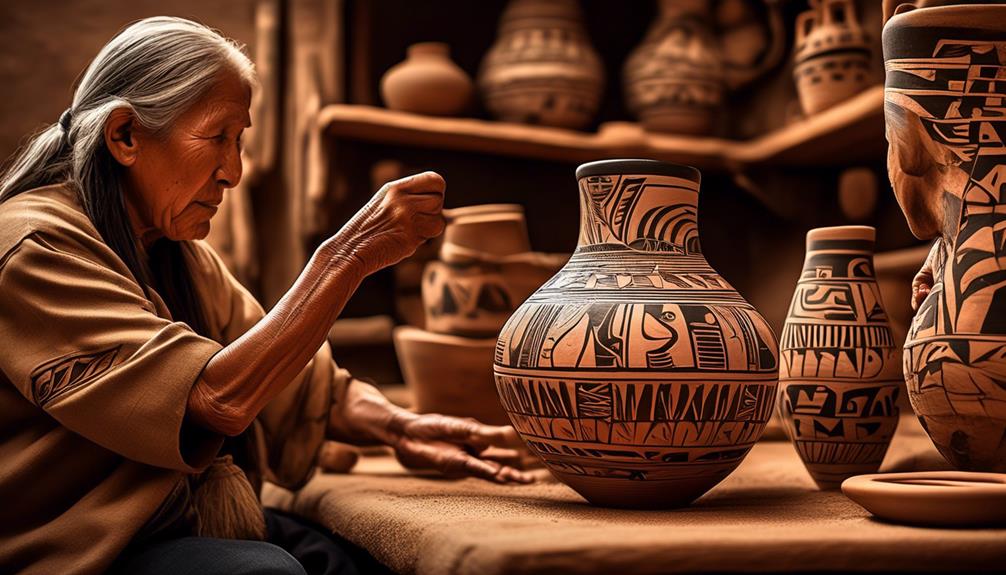
Resilience and cultural continuity are integral aspects of the Hopi Tribe's history, serving as enduring strengths amid the profound disruptions caused by European contact. The Hopi people have demonstrated remarkable resilience, adapting to changing circumstances while preserving their cultural heritage and community continuity. This resilience is evident in various aspects of their lives, including their agricultural practices, language preservation, and ceremonial traditions.
| Resilience | Adaptation | Cultural Preservation |
|---|---|---|
| Enduring strength | Flexible response | Heritage conservation |
| Perseverance | Adjusting to challenges | Tradition safeguarding |
The Hopi's ability to adapt to new environmental and socio-political conditions has enabled them to maintain their traditional way of life. Their commitment to cultural preservation has safeguarded their unique customs, beliefs, and artistic expressions, serving as a source of resilience and strength. Furthermore, the community continuity within the Hopi Tribe has been sustained through intergenerational knowledge transfer, cohesive social structures, and a shared commitment to preserving their cultural identity. This unwavering dedication to their heritage has allowed the Hopi people to endure and thrive despite the challenges posed by external influences.
Contemporary Challenges and Future Outlook
Despite the Hopi Tribe's enduring strengths and cultural continuity, they face contemporary challenges that necessitate a proactive approach to ensure their future resilience and sustainability.
In the modern world, the Hopi Tribe encounters several challenges that require careful navigation and strategic planning to safeguard their heritage and well-being.
- Environmental Pressures: The Hopi Tribe is experiencing the impact of climate change, which poses a threat to their agricultural practices and traditional way of life. Droughts, unpredictable weather patterns, and diminishing natural resources are pressing concerns that require sustainable solutions.
- Economic Development: Balancing the preservation of cultural values with the need for economic development is a complex challenge. The tribe seeks to create opportunities for its members while preserving their unique cultural identity and traditions.
- Preservation of Language and Culture: In the face of globalization and modernization, the Hopi Tribe is striving to maintain and pass on their language, traditions, and ceremonies to future generations. Efforts to sustain and revitalize their cultural heritage are crucial for the tribe's continuity and resilience.
The Hopi Tribe is actively engaging in sustainability efforts, working towards a future that honors their rich history while addressing the demands of the contemporary world.
Frequently Asked Questions
What Are Some Specific Ancient Traditions and Cultural Practices That the Hopi Tribe Still Follows Today?
Ancient rituals play a vital role in Hopi tradition. The tribe still follows specific ceremonial practices, like the Snake Dance and the Niman Kachina ceremony, which have been passed down through generations.
Additionally, agricultural practices remain central to their culture, with the planting and harvesting of crops following traditional methods.
These rituals and practices reflect the deep-rooted cultural heritage of the Hopi tribe and continue to be integral to their way of life.
How Has the Impact of European Contact Shaped the Hopi Tribe's Cultural Identity and Traditions?
In understanding the impact of European contact on the Hopi tribe's cultural identity, it's evident that cultural preservation has been vital in maintaining traditional practices. European influence introduced new elements, but the Hopi's historical resilience has enabled them to adapt while safeguarding their traditions.
This interaction has shaped a unique cultural identity, where traditional practices coexist with external influences, showcasing the tribe's ability to maintain its heritage amidst changing dynamics.
What Are Some Examples of the Hopi Tribe's Resilience in the Face of Historical Challenges and Adversities?
In the face of historical challenges and adversities, the Hopi tribe has shown remarkable resilience. Despite the impact of European contact, our traditions and cultural practices have persisted. Our ability to adapt and preserve our way of life in the wake of external pressures demonstrates our enduring strength.
The Hopi people have continuously drawn on our deep-rooted values and beliefs to navigate and overcome various obstacles throughout history.
What Are Some Contemporary Challenges That the Hopi Tribe Faces, and What Are Their Future Outlook and Plans for Addressing These Challenges?
Contemporary challenges facing the Hopi tribe include economic struggles and maintaining cultural practices amidst European influence.
Despite these challenges, the tribe is focused on sustainable development, preserving traditions, and fostering community resilience.
Future plans involve advocating for tribal sovereignty and pursuing economic initiatives that respect cultural values.
These efforts aim to ensure a strong and prosperous future for the Hopi tribe, emphasizing the importance of cultural preservation and self-determination.
Can You Provide Insights Into the Hopi Tribe's Current Economic, Social, and Political Situation?
We face ongoing challenges in economic development due to limited resources and isolation. Current challenges include unemployment, lack of infrastructure, and limited access to markets.
Our tribe is striving to address these issues through initiatives such as promoting entrepreneurship, expanding tourism, and advocating for improved infrastructure. By focusing on sustainable economic development, we aim to create opportunities for our people and ensure a prosperous future for the Hopi Tribe.
Conclusion
In conclusion, the Hopi tribe has stood as a beacon of resilience and cultural continuity for centuries, like a sturdy oak tree weathering the storms of time.
Despite the challenges brought on by European contact and contemporary issues, their ancient traditions and strong community ties have helped them endure.
As we look to the future, it's important to support and celebrate the rich heritage of the Hopi tribe, ensuring that their legacy continues to thrive for generations to come.
Mary is a passionate writer who brings creativity and a fresh perspective to our team. Her words have the power to captivate and inspire, making her an essential contributor to our content. Mary’s commitment to storytelling and dedication to promoting Indigenous culture ensures that her work touches the hearts of our readers. We’re fortunate to have her as part of our team.
